Let's Make it (Email) Official
Become an AuthenTEAK Insider and be first to know about new collections, exclusive sales, and special offers.
Let's Make it (Email) Official
Become an AuthenTEAK Insider and be first to know about new collections, exclusive sales, and special offers.
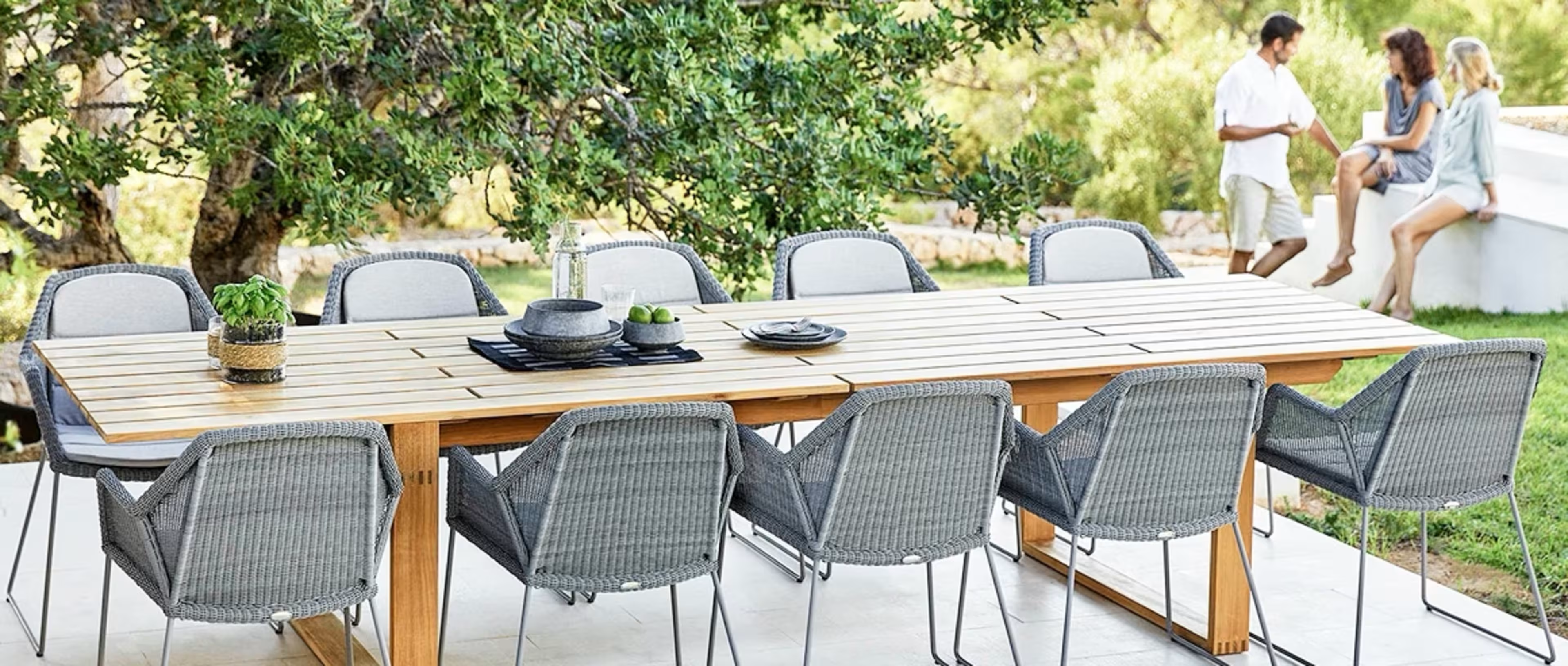
When it comes to designing an outdoor dining space that’s as beautiful as it is functional, the table you choose sets the tone. And at the center of every memorable alfresco meal? A surface that can handle the elements, the spills, and the everyday memories.
But not all outdoor dining tables are created equal. Climate, maintenance, and long-term durability all play a role in finding the best material for your outdoor dining table. Whether you're furnishing a sun-soaked poolside patio or a cozy screened porch, the right surface will elevate your space and simplify your life.
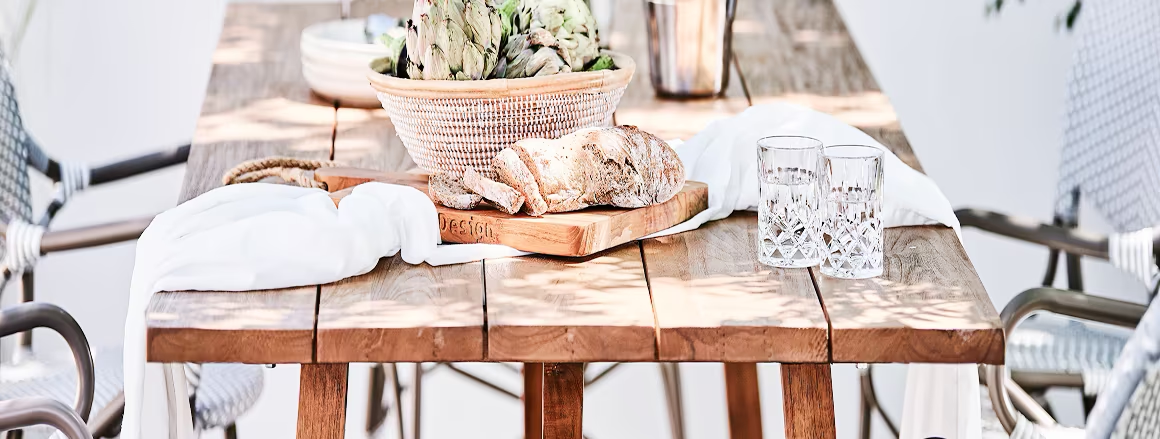
Before falling for a look, consider the following:
Climate: Salt air, dry heat, humidity, and freeze-thaw cycles all affect material performance.
Maintenance level: How much upkeep are you realistically willing to commit to?
Weight and mobility: Will you want to rearrange your layout seasonally?
Design aesthetic: What materials pair well with your dining chairs, flooring, or architectural features?
Longevity vs. trends: Invest in something that will age well and endure the elements.
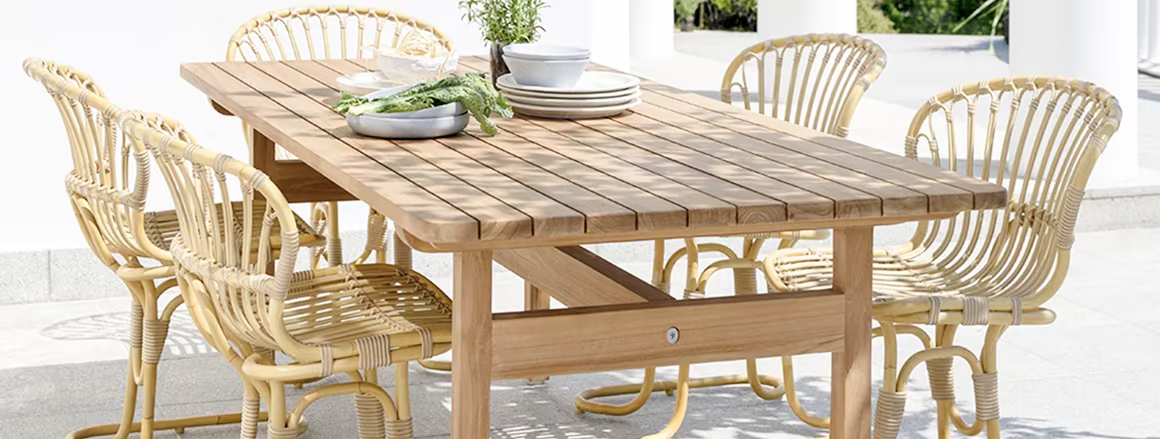
A go-to for designers and seasoned homeowners alike, teak is beloved for its natural oils, golden hue, and ability to withstand all climates. Over time, it gracefully fades to a silver patina—or can be oiled to retain its warmth.
Timeless, high-end look
Resistant to rot, insects, and moisture
Performs beautifully in coastal, humid, and all-season environments
Higher price point, requires periodic maintenance if you want to preserve the color
Naturally sustainable when sourced responsibly, with long-lasting performance that reduces the need for replacement.

Bold and sculptural, concrete tables bring architectural edge to any outdoor setup. Though porous by nature, most designs are sealed for durability.
Ultra-sturdy and weather-resistant in dry climates
Statement-making material for modern spaces

This ultra-dense tropical hardwood has rich coloring and serious durability.
Highly resistant to moisture, insects, and wear
Holds up well in humid, coastal, and four-season climates
Needs oiling to retain color;

Sleek, rust-resistant, and lightweight, aluminum is one of the most versatile materials for outdoor dining, especially in humid or salt-air regions.
Excellent for coastal and rainy environments
Easy to clean and reposition
Great for modern or transitional styles

Ceramic tabletops—usually mounted on aluminum frames—offer the durability of stone with the elegance of indoor furniture.
Heat-, stain-, and scratch-resistant
Ideal for dry or all-season climates
Pairs beautifully with minimalist or modern designs

Made from high-density polyethylene (HDPE), this sustainable option offers major practicality without sacrificing style.
Low-maintenance and easy to clean
UV- and moisture-resistant
Great for family-friendly or coastal homes

Typically woven resin over a powder-coated aluminum frame, all-weather wicker gives texture and warmth while staying outdoor-safe.
Lightweight and durable
Works well in transitional or coastal spaces

Blending materials—like teak with aluminum or ceramic with steel—can offer both function and flair.
Designer-forward and visually dynamic
Can optimize performance by climate
Varies in upkeep depending on combination
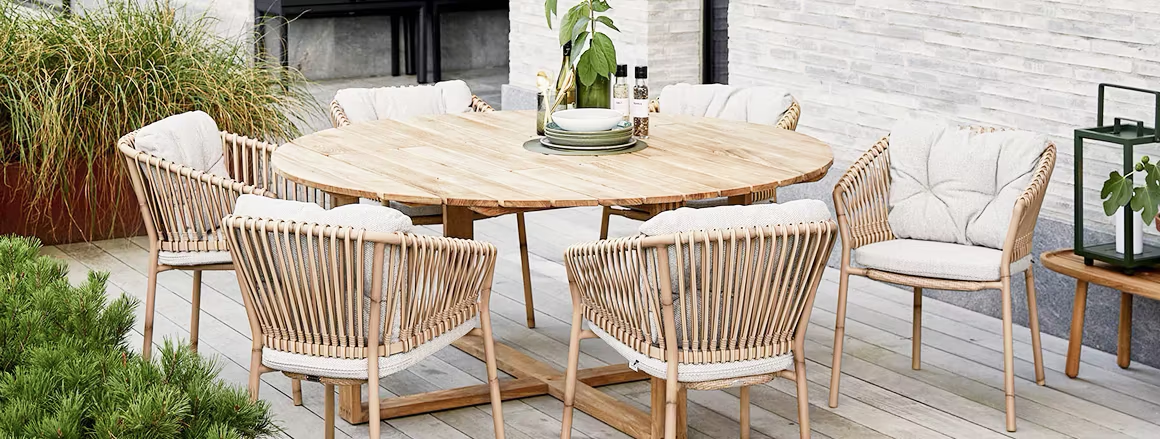
For coastal climates, look for teak, aluminum, recycled plastic, or all-weather wicker, all of which resist moisture and salt air beautifully. In desert or dry environments, concrete and ceramic excel thanks to their resistance to cracking and heat. Humid regions benefit from moisture-resistant options like teak, ipe, aluminum, and all-weather wicker. For mountainous or four-season regions, teak, ipe, mixed materials, and recycled plastic are excellent for withstanding fluctuating temperatures and varied weather conditions.
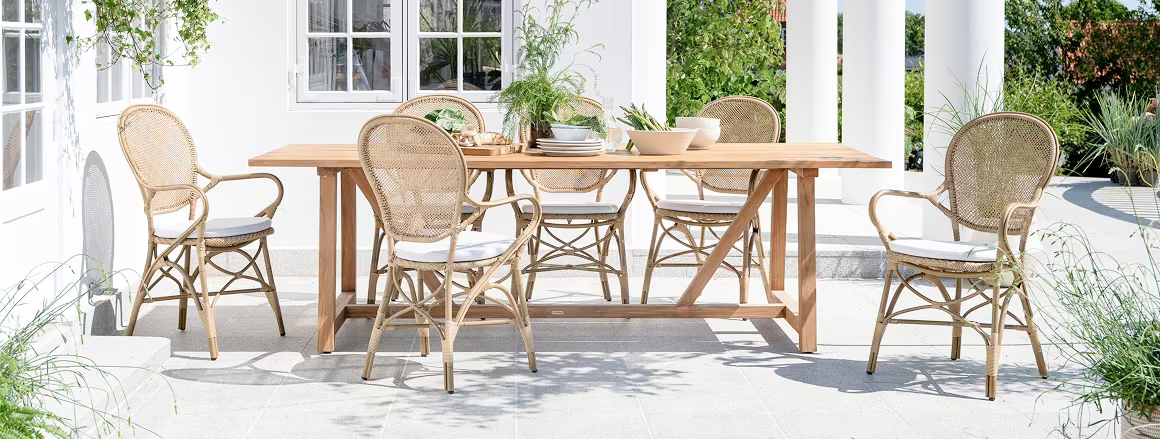
Consider how the material, shape, and finish will interact with the rest of your space.
Warm woods: Teak and Ipe bring a natural warmth and pair beautifully with lush landscaping, stone pavers, and other organic textures.
Cool metals: Aluminum and steel offer a sleek, contemporary edge, perfect for pairing with minimalist architecture, glass railings, or modern planters.
Neutral stone: Concrete and ceramic create a grounded, architectural look that works well in both modern and rustic settings.
Mixed materials: Combining elements like wood and metal or stone and steel can create a high-end, designer feel that adds depth to your space
When styling, think beyond the table itself. Coordinating dining chairs, benches, and accent tables can create a layered, intentional look. Add dimension with outdoor rugs, planters, and lighting to make the dining area feel like an extension of your home. If shade is a priority, choose a table that’s compatible with your preferred umbrella style—market umbrellas for a centered, classic look or cantilever umbrellas for maximum flexibility without blocking sightlines.
Categories
Recent Posts